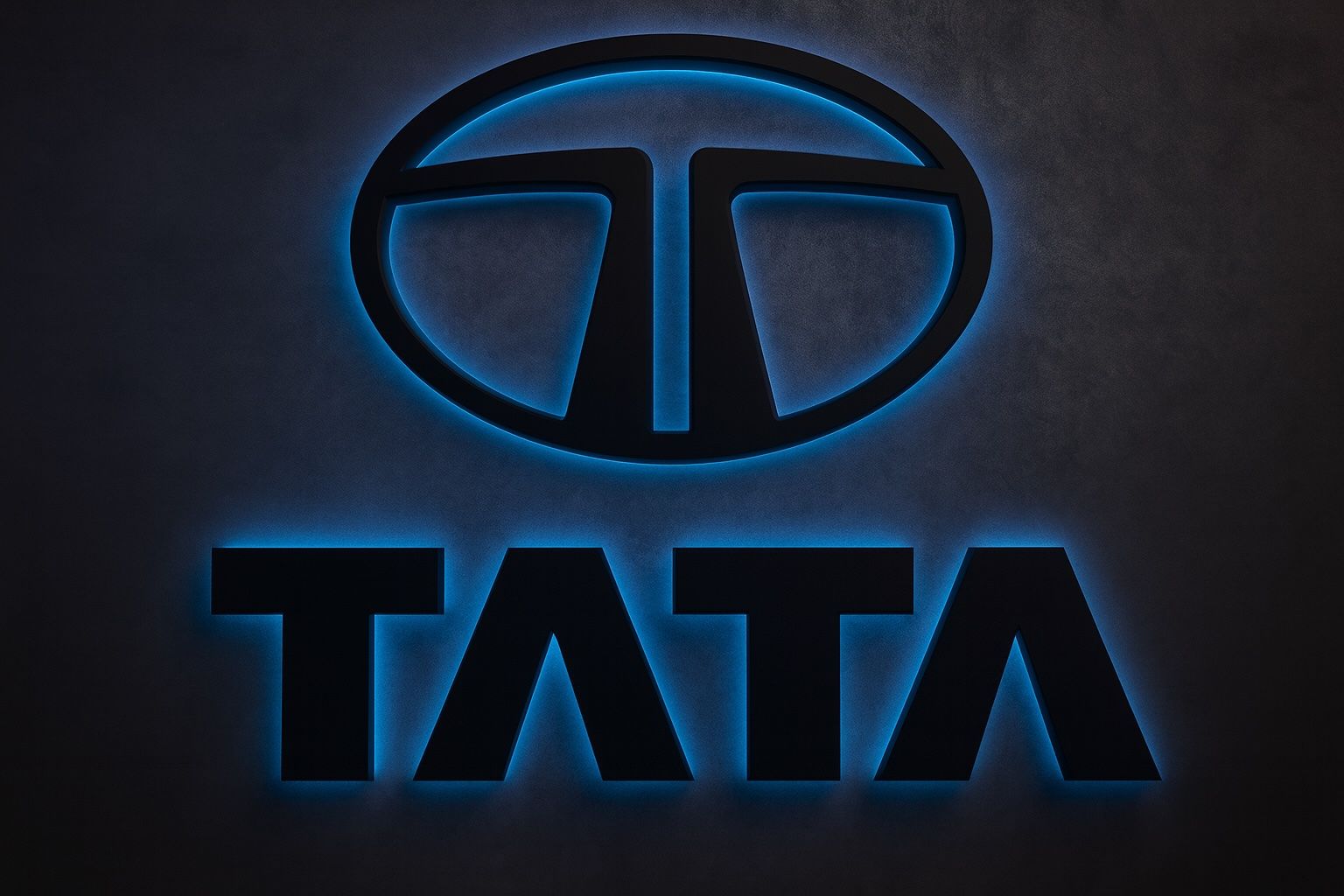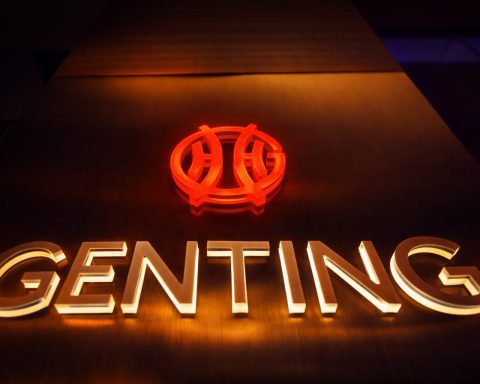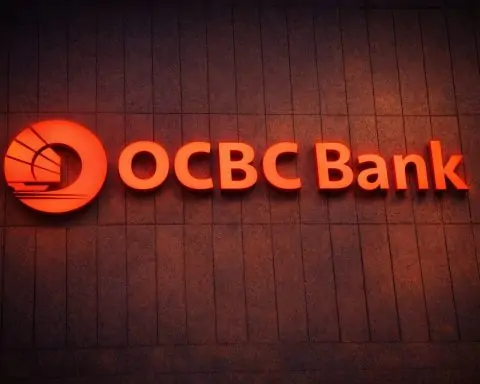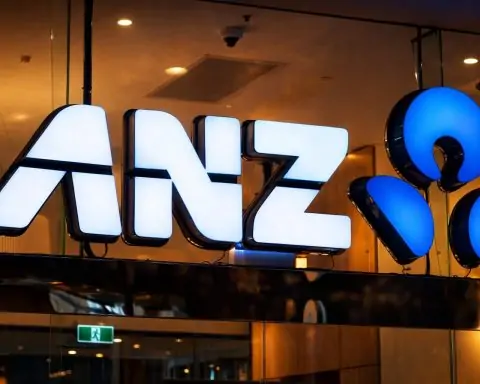Tata Motors’ newly listed commercial vehicles arm is having a busy second day on the bourses.
On Thursday, 13 November 2025, Tata Motors Ltd (commercial vehicles business, ticker: TMCV) traded lower as investors booked profits ahead of the company’s first standalone quarterly results post demerger.
1. TMCV share price today: how the stock traded
According to exchange data compiled by Economic Times and Upstox, Tata Motors Commercial Vehicles (TMCV):
- Last traded around ₹320.75 on the NSE on 13 November 2025
- Was down about 2.6–2.7% from its previous close of ₹329.45
- Moved in a day range of roughly ₹316–₹326
- Is now trading more than 5% below its NSE listing price of ₹335 and around 2.6% below Wednesday’s close of ₹329–330 [1]
Business Standard’s and ET’s data also indicate that the stock has quickly moved from a fresh high near ₹345 on listing day to testing new lows around ₹315–316, effectively setting a very tight 52‑week range within just two sessions of trading. [2]
In simple terms:
After a big debut, TMCV has eased back to levels that analysts had tagged as “fair value”, even as the company prepares to unveil Q2 FY26 numbers.
2. From euphoric listing to cool‑off in just two days
The weakness today comes on the heels of a headline‑grabbing debut on 12 November 2025:
- Listing date: 12 November 2025
- NSE debut:₹335 per share, about 28–28.5% above the implied value of ~₹260.75
- BSE debut:₹330.25, around 26% premium versus adjusted value [3]
- Intraday high (listing day): around ₹345–346.75
- Listing day close: ~₹329–330 on NSE/BSE
- Market capitalisation at debut: roughly ₹1.21 trillion (₹1.21 lakh crore) [4]
Coverage from Startuppedia, India News Network, Business Standard and Upstox all highlight that the market cheered the split between passenger and commercial vehicles, rewarding the CV arm with a sharp premium out of the gate. [5]
However, day two has brought a reality check:
- Economic Times reports that TMCV has fallen over 5% in two sessions after the “solid debut”, sliding from the ₹335 opening print to intraday lows around ₹316–317 today. [6]
- Samco and other broker commentaries describe today’s move as “mild selling pressure” and profit‑booking ahead of Q2 numbers rather than a fundamental reversal. [7]
So far, the story looks very textbook:
- Big premium at listing
- Fast profit‑taking
- Price gravitating toward analyst fair‑value bands around ₹310–₹320 per share. [8]
3. Q2 FY26: first standalone results for the CV business
A key reason TMCV is in focus on 13 November 2025 is that its board meets today to approve results for the quarter and half‑year ended 30 September 2025 (Q2 FY26):
- In a stock‑exchange filing and as summarised by Upstox and India News Network, Tata Motors Ltd (CV) said its Board of Directors would meet on Thursday, 13 November 2025 to consider:
- Audited standalone financials for Q2 and H1 FY26
- Unaudited consolidated results (with limited review) [9]
- The company has also scheduled an investor/analyst conference call at 6:30 pm IST today to discuss the numbers. [10]
At the time of the news reports cited here, Q2 results had not yet been published, so the market move is driven by expectations rather than actual earnings.
What the Street will likely focus on
Based on pre‑listing and preview reports from Business Standard, ET and brokerages: [11]
- Volume trends in medium & heavy commercial vehicles (M&HCVs), intermediate/light commercial vehicles (ICVs/LCVs) and buses
- Margins in a still‑cyclical CV environment: how much of the FY25 11.8% EBITDA margin can be sustained? [12]
- Impact of GST rate rationalisation (28% to 18% on CVs) on demand and pricing power
- Exports vs domestic mix, especially after double‑digit growth in October CV sales (up ~10% YoY to 37,530 units, with exports jumping 56%). [13]
- Any updates on the proposed Iveco commercial vehicle acquisition, which brokerages see as a key long‑term growth lever. [14]
Until those numbers land, Thursday’s price action is best read as positioning and sentiment, not a verdict on the standalone performance.
4. Management commentary: stronger H2, CV upcycle and EV push
Even as the stock cools, management sounds upbeat.
In an interview covered by ET Auto on 13 November, Girish Wagh, MD & CEO of Tata Motors Ltd (CV), said the commercial vehicles business expects a “far better” second half of FY26, citing: [15]
- Demand improvement after GST rate rationalisation on commercial vehicles
- Rising freight movement on roads, leading to higher truck utilisation
- Fleet owners upgrading to more heavy‑duty, long‑haul trucks
- A pipeline of new product launches that should support volumes
Wagh also laid out a technology and sustainability roadmap:
- In small and light commercial vehicles, the company already sells multiple electric models, including the recently launched Ace Pro Electric, which it calls the country’s lowest‑priced four‑wheeler EV in that segment. [16]
- Work is underway on electric solutions for medium and heavy trucks and on hydrogen‑based powertrains, reflecting Tata Motors’ ambition to lead the transition to clean freight and public transport. [17]
This message fits neatly with what Tata Sons chairman N. Chandrasekaran said at the listing ceremony on the BSE:
- The CV arm is now debt‑free, giving it the balance‑sheet strength to “be very bold”.
- The next phase will focus on electrification, hydrogen trucks, new‑energy buses and digital mobility services, backed by a more focused governance structure as a separate listed entity. [18]
In other words, the demerger is not just an accounting exercise—it is being framed as a strategic reset for a more capital‑efficient, tech‑driven CV franchise.
5. Fundamentals: how big is Tata Motors’ CV business?
Pre‑demerger disclosures and post‑split analyses from Business Standard, ET and Startuppedia give a good sense of the scale and profitability of the CV arm: [19]
- FY25 CV revenue: about ₹75,053–75,055 crore
- FY25 EBITDA: around ₹8,856 crore
- EBITDA margin: just under 12%
- FY25 profit before tax (CV specific): roughly ₹6,649 crore
This makes TMCV:
- India’s largest commercial vehicle manufacturer, with a presence from small cargo carriers to M&HCVs and buses [20]
- A predominantly India‑focused business, though exports (especially to Africa, the Middle East and parts of Asia) are growing from a smaller base [21]
Analysts quoted by Business Standard and ET have used Ashok Leyland’s EV/EBITDA multiple of ~12.9x as a benchmark, arriving at a fair value band of around ₹310–₹320 per TMCV share, broadly in line with where the stock is trading after today’s correction. [22]
That’s important context for investors who felt the listing‑day spike to ₹345 looked stretched.
6. Why is the stock falling today? Profit‑taking and pre‑results nerves
So what exactly is behind Thursday’s weakness?
a) Classic post‑listing profit‑booking
Both Economic Times and Samco explicitly frame the move as a cool‑off after a euphoric debut: [23]
- The stock is still above the implied demerger value (~₹260–₹270).
- Early investors who saw a 25–30% pop in a single session are naturally locking in gains.
- Some brokerages even suggested partial profit‑booking while maintaining a constructive long‑term view.
b) Pre‑earnings caution
Samco’s market note and Scanx coverage highlight that the dip has come “ahead of Q2 FY26 results”, a pattern often seen as traders reduce risk before key announcements. [24]
With TMCV yet to build a long, listed track record of earnings, volatility around results is likely to be higher than usual.
c) Re‑rating toward fundamental value
Broker models pegged fair value roughly in the low‑₹300s, assuming:
- Mid‑cycle CV volumes
- Sustained double‑digit EBITDA margins
- Gradual benefits from the proposed Iveco acquisition and export expansion [25]
A drift from ₹345 down to ~₹320 brings TMCV closer to that fundamental anchor, which analysts see as more healthy than alarming, given the still‑optimistic long‑term CV demand story.
7. Demerger maths: how your old Tata Motors cost splits between PV and CV
One of today’s widely shared explainers on ET Markets breaks down the cost of acquisition for investors who held Tata Motors shares before the split. According to the company’s filing, your original Tata Motors investment is now allocated as follows: [26]
- 31.15% of your original cost is attributed to Tata Motors Ltd (Commercial Vehicles – TMCV)
- 68.85% goes to Tata Motors Passenger Vehicles Ltd (TMPV)
Example (paraphrased from ET):
If you bought 1,000 Tata Motors shares at ₹400 (total cost ₹4,00,000), after the demerger you still own 1,000 shares each of TMCV and TMPV.
For tax and accounting:
– Your TMCV cost becomes roughly ₹1,24,600 (₹124.6 per share)
– Your TMPV cost becomes roughly ₹2,75,400 (₹275.4 per share)
Key tax points mentioned in the explainer:
- The demerger itself is not considered a transfer, so no immediate capital gains tax is triggered.
- For TMCV shares received in the demerger, the date of acquisition is treated as the original Tata Motors purchase date, which can be important for long‑term vs short‑term tax classification. [27]
If you’re an investor, this split is crucial when working out gains or losses if you choose to sell either CV or PV shares.
(This is general information, not personalised tax advice—investors should confirm details with a qualified tax or financial professional.)
8. Strategic rationale: two focused bets instead of one conglomerate
With the demerger now fully effective (legal date 1 October 2025, record date 14 October 2025), Tata Motors has transformed from one complex auto conglomerate into two distinct listed entities: [28]
- TMPV – Tata Motors Passenger Vehicles Ltd
- Houses the India PV & EV businesses and Jaguar Land Rover (JLR)
- Highly leveraged to global luxury demand via JLR
- TMCV – Tata Motors Ltd (Commercial Vehicles)
- Focused on trucks, buses, small commercial vehicles and CV‑related services
- Largely India‑centric, but expanding exports
Business Standard nicely summarises the post‑split investment logic:
- TMPV is a global luxury plus domestic EV/PV story with meaningful exposure to JLR’s fortunes in the UK, EU, US and China.
- TMCV is a domestic mobility and infrastructure play, aligned with India’s freight, construction, mining, logistics and public‑transport cycles. [29]
By removing the old “conglomerate discount”, the market can now value each arm on its own merits—something analysts have been calling for since Tata Motors first floated the demerger idea.
9. How analysts are reading TMCV after today’s slide
Across ET, Business Standard, Startuppedia and broker notes cited in those reports, a few themes emerge: [30]
- Structural positive:
- TMCV is India’s largest CV player, central to the country’s logistics, infra and consumption growth story.
- GST cuts, freight recovery, replacement demand and infra spending are expected to support volumes in H2 FY26 and beyond.
- Valuation view:
- At listing‑day levels near ₹340–₹345, several analysts felt the stock was “fully valued to slightly rich.”
- Around ₹310–₹320, many models see it as closer to fair value, assuming mid‑cycle CV conditions.
- Key upside drivers to monitor:
- Execution of the Iveco acquisition and global CV strategy
- Success of electric and hydrogen CV products, particularly in small and medium trucks
- Margin discipline and cash generation in a still‑cyclical industry
- Risks flagged:
- CV demand is highly cyclical, tied to rates, freight, infra spending and broader GDP trends
- Integration risks around acquisitions and new technologies
- Any slowdown in government or private capex could weigh on volumes
Most commentary so far leans towards “constructive but cautious”—seeing today’s correction as part of a normal price‑discovery process for a newly listed, cyclical stock, not as a red flag.
10. What today’s action means for investors
Putting it all together, the picture for 13 November 2025 looks like this:
- The stock:
- TMCV is trading near ₹320, down about 2.5–3% today and 5–6% below its opening print on listing day. [31]
- The backdrop:
- India’s benchmark indices were broadly flat to mildly positive, meaning the TMCV move is more stock‑specific than market‑wide. [32]
- The trigger:
- Profit‑booking after a 25–30% premium listing
- Pre‑results caution ahead of the first standalone Q2 FY26 earnings and evening concall
- The story:
- Management is signalling a stronger H2, backed by CV demand, infra activity and an aggressive clean‑mobility roadmap, including EVs and hydrogen. [33]
- Fundamentals (FY25 revenue, margins, profit) and analyst fair‑value bands suggest Thursday’s level is closer to intrinsic value than the peak seen yesterday. [34]
For investors, the next big data point will be:
TMCV’s Q2 FY26 results and management commentary later today, which will either reinforce the bullish structural story or add caution around near‑term margins and demand.
A quick word of caution
This article summarises publicly available information and analyst commentary as of 13 November 2025. It is not investment advice or a recommendation to buy, sell or hold any security. If you are considering trading TMCV or any Tata Motors stock, it’s wise to:
- Review the actual Q2 FY26 financials and concall transcript once available
- Consider your risk tolerance, time horizon and asset allocation
- Consult a SEBI‑registered financial advisor or tax professional for personalised guidance
References
1. economictimes.indiatimes.com, 2. www.business-standard.com, 3. upstox.com, 4. upstox.com, 5. startuppedia.in, 6. m.economictimes.com, 7. www.samco.in, 8. m.economictimes.com, 9. upstox.com, 10. upstox.com, 11. www.business-standard.com, 12. www.business-standard.com, 13. startuppedia.in, 14. m.economictimes.com, 15. auto.economictimes.indiatimes.com, 16. auto.economictimes.indiatimes.com, 17. auto.economictimes.indiatimes.com, 18. www.rediff.com, 19. www.business-standard.com, 20. www.business-standard.com, 21. www.business-standard.com, 22. www.business-standard.com, 23. m.economictimes.com, 24. www.samco.in, 25. www.business-standard.com, 26. m.economictimes.com, 27. m.economictimes.com, 28. www.business-standard.com, 29. www.business-standard.com, 30. m.economictimes.com, 31. economictimes.indiatimes.com, 32. m.economictimes.com, 33. auto.economictimes.indiatimes.com, 34. www.business-standard.com








